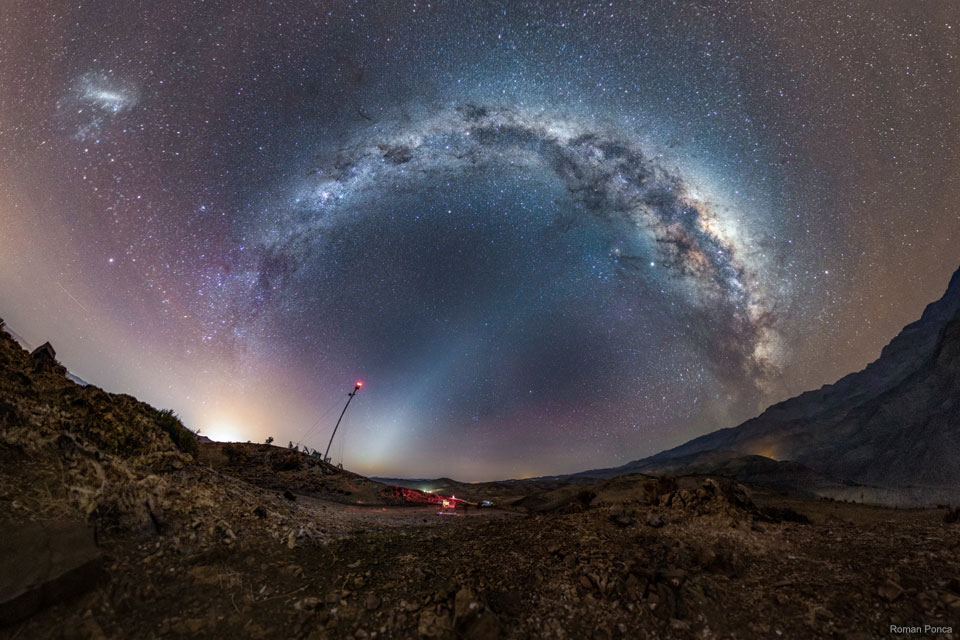2020 March 9
Milky Way and Zodiacal Light over Chile
Image Credit & Copyright: Roman Ponča (ht: Masaryk U.)
Explanation: What is the band of light connecting the ground to the Milky Way? Zodiacal light — a stream of dust that orbits the Sun in the inner Solar System. It is most easily seen just before sunrise, where it has been called a false dawn, or just after sunset. The origin of zodiacal dust remains a topic of research, but is hypothesized to result from asteroid collisions and comet tails. The featured wide-angle image shows the central band of our Milky Way Galaxy arching across the top, while the Large Magellanic Cloud (LMC), a satellite galaxy to our Milky Way, is visible on the far left. The image is a combination of over 30 exposures taken last July near La Serena among the mountains of Chile. During the next two months, zodiacal light can appear quite prominent in northern skies just after sunset.
Almost Hyperspace: Random APOD Generator
Tomorrow’s picture: cone of stars
智利上空的银河与黄道光
影像提供与版权: Roman Ponča (ht: Masaryk U.)
说明: 那道连接地面与银河的光带是什么?它是太阳系内环绕太阳的尘埃流反射阳光产生的黄道光。最容易见到它的时间点,是紧在日出之前,此时它称为假曙光,或在紧接在日落之后。黄道光尘埃的来源,至今仍然是研究的题材,但假说倡言可能源自小行星互撞或彗星的彗尾。在这幅广角主题影像里,我们银河系的中央盘面如拱弧悬在顶端,而左缘可见到我们银河系的伴星系 ─ 大麦伦哲星系 (LMC)。这张影像整合了30多帧,去年7月在智利山区拉塞勒那市近郊连续拍摄的照片。在接下来的2个月之间,日落后在北半球的天空中可见到明显的黄道光。
Almost Hyperspace: Random APOD Generator
明日的图片: cone of stars




怎么下载
图片的话,右键复制就好了啊
请参阅说明。单击图片将下载可用的最高分辨率版本。